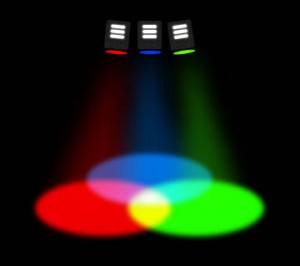 We all understand color theory and mixing thus far in our career. With a huge thanks to Lucas Krech and his color theory essays, we can say we have an even deeper love and respect for color. One thing I was recently turned on to was the conversion from RGB values to CMY values within lighting.
We all understand color theory and mixing thus far in our career. With a huge thanks to Lucas Krech and his color theory essays, we can say we have an even deeper love and respect for color. One thing I was recently turned on to was the conversion from RGB values to CMY values within lighting.
Miles Dudgen from Prism Projection made me aware of how we can take an RGB value and quickly turn it into a CMY value.
“Pure” theoretical RGB and CMY are the inverse if each other. Of course this isn’t really true, because the starting RGB points and starting CMY points won’t be the true inverse of each other. If CMY systems were pure, a Sea Changer at 100%,100%,100% would be blacked out. Its close but not black. And pure RGB systems would be white at all full (we all know how that works out).
To help illustrate Miles point, lets take a look at what some of the colors look like when mixing between RGB and CMY.
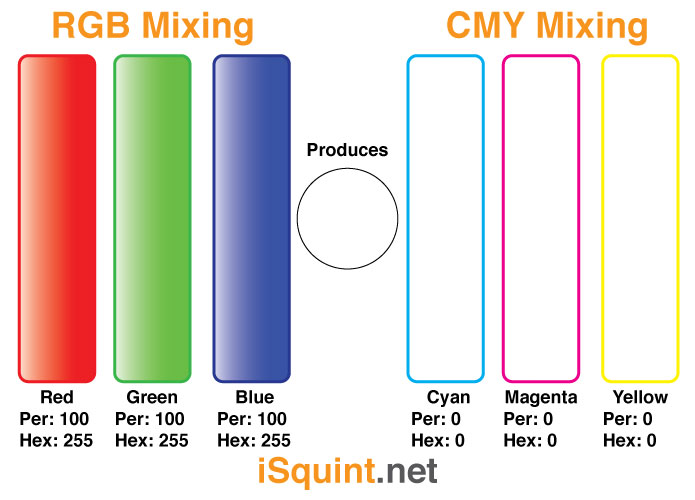
In the above illustration, it show what colors DMX value per each mixing mode. In order to produce white light with an RGB LED source, we need to have each color at 100% while and tungsten or HMI source with CMY flags need to be at 0% or completely open.
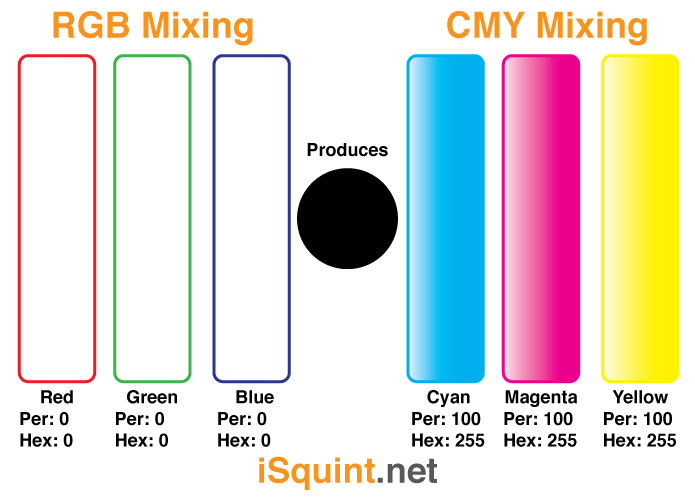
The above illustration shows the complete opposite of white light, no light. With and RGB LED source, that is simple, turn off all the LEDs, or 0% level and the fixture is no putting out any light. With an Tungsten or HMI source, again with CMY flags, if we bring in all of the flags to 100%, none or next to no light will be coming out of the fixture. Of course a simpler and easier way to “black out” a Tungsten source is to take is intensity level to 0%.
The next three illustrations show three colors when mixing between RGB and CMY and how the are almost directly opposite in levels.

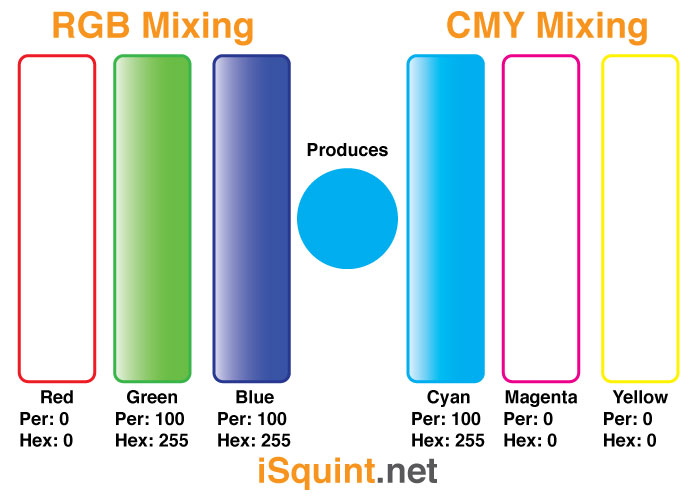
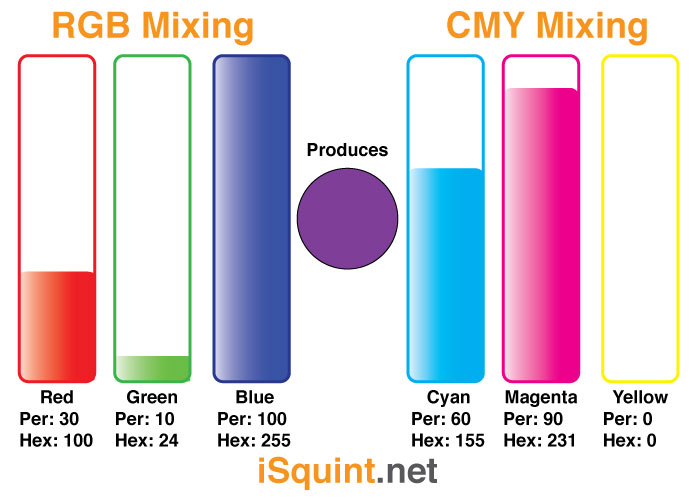
Are these directly opposite all of the time, not necessarily, but they are close. These illustrations show that “theoretically” RGB and CMY modes are directly opposite of each other in levels.
What do you think? IS RGB and CMY truly complete opposites? I would love to hear what you think in the comments section of this article.
LatestHeadlines
- Upgrading Your Toolbox: City Theatrical DMXcat-E and DMXcat Multi Function Test Tool
- Claypaky Bringing Back the Sexy to Par Cans with the Midi-B FX
- Ayrton Evolves the Cobra, the Cobra2 Developed for the US Market
- MA Lighting Intros grandMA3 onPC Fader Wing and DIN-Rail Nodes
- Live Events LEVL Up Fest: A Festival to Aid our Industry